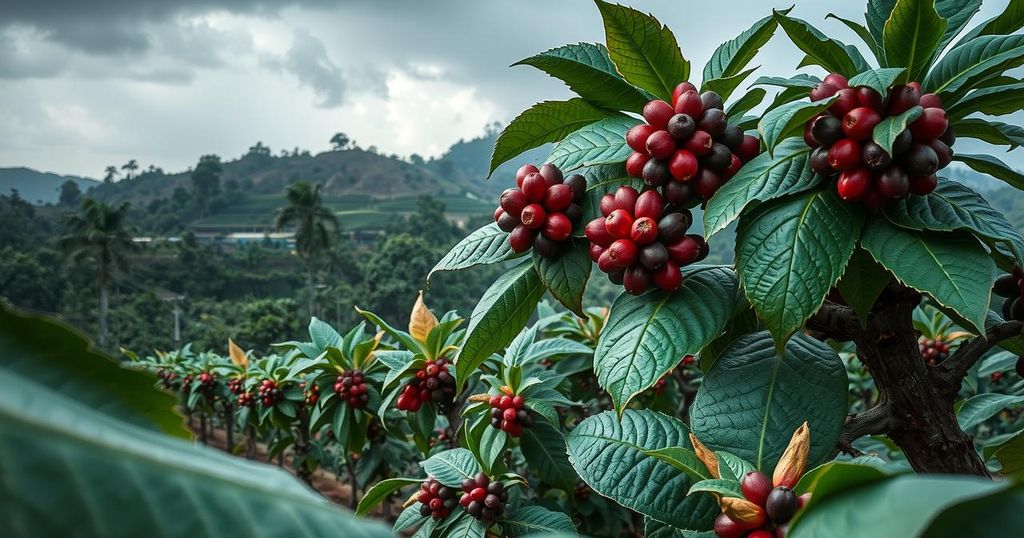Extreme weather in 2024 resulted in production declines for coffee, cocoa, and orange juice due to droughts, hurricanes, and disease. Brazil, a major coffee exporter, faced drought and a severe freeze, while cocoa prices surged because of adverse weather in West Africa. U.S. orange production decreased sharply due to disease and storm damage, leading to expectations of higher consumer prices as 2025 approaches.
In 2024, extreme weather events led to significant reductions in the production of coffee, cocoa, and orange juice, key soft commodities globally consumed yet thinly traded. Brazil, which produces approximately 40% of the world’s coffee, experienced severe drought conditions that damaged coffee flowers and beans. Added to this, a mid-August freeze curbed the emerging coffee crop. Reports indicated that Brazil’s coffee exports surged yet the harvest was virtually unchanged from the previous year due to ongoing droughts affecting future production seasons.
Cocoa prices saw unprecedented increases, soaring from $4,209 to $12,931 per metric ton, primarily due to adverse weather in West Africa. The region experienced both heavy rainfall and drought, which severely affected crop yields and led to volumes falling below the five-year average. As a result, consumers can expect at least a 10% rise in chocolate prices by 2025.
U.S. orange production remains substantially lower than a decade ago, compounded by citrus greening disease and hurricane damage. Hurricane Milton struck Florida’s citrus groves in 2024, prompting the USDA to reduce its production estimates for Florida oranges by 20%. Simultaneously, drought conditions in Brazil further impacted orange yields.
While weather-related challenges drive price spikes, other factors such as global conflicts and crop diseases also play a role, suggesting an uncertain market landscape as 2025 approaches.
The article highlights the effects of extreme weather on the production of soft commodities such as coffee, cocoa, and orange juice in 2024. These commodities are crucial not only for their economic value but also for their wide-ranging impact on consumer prices. Factors contributing to production declines include drought, hurricanes, and disease, which together indicate a shift toward more volatile weather patterns affecting crop yields worldwide. The implications of these changes extend beyond production to global market prices, influencing what consumers pay for these staples.
The significant disruptions in the production of coffee, cocoa, and orange juice due to extreme weather reflect a troubling trend affecting agricultural stability and market prices. With adverse weather conditions and their impacts on crop yield becoming increasingly unpredictable, consumers may face higher prices in the near future. Addressing these challenges will require concerted efforts in agricultural practices and climate adaptation strategies to ensure food security and economic stability in soft commodity markets.
Original Source: www.dtnpf.com






